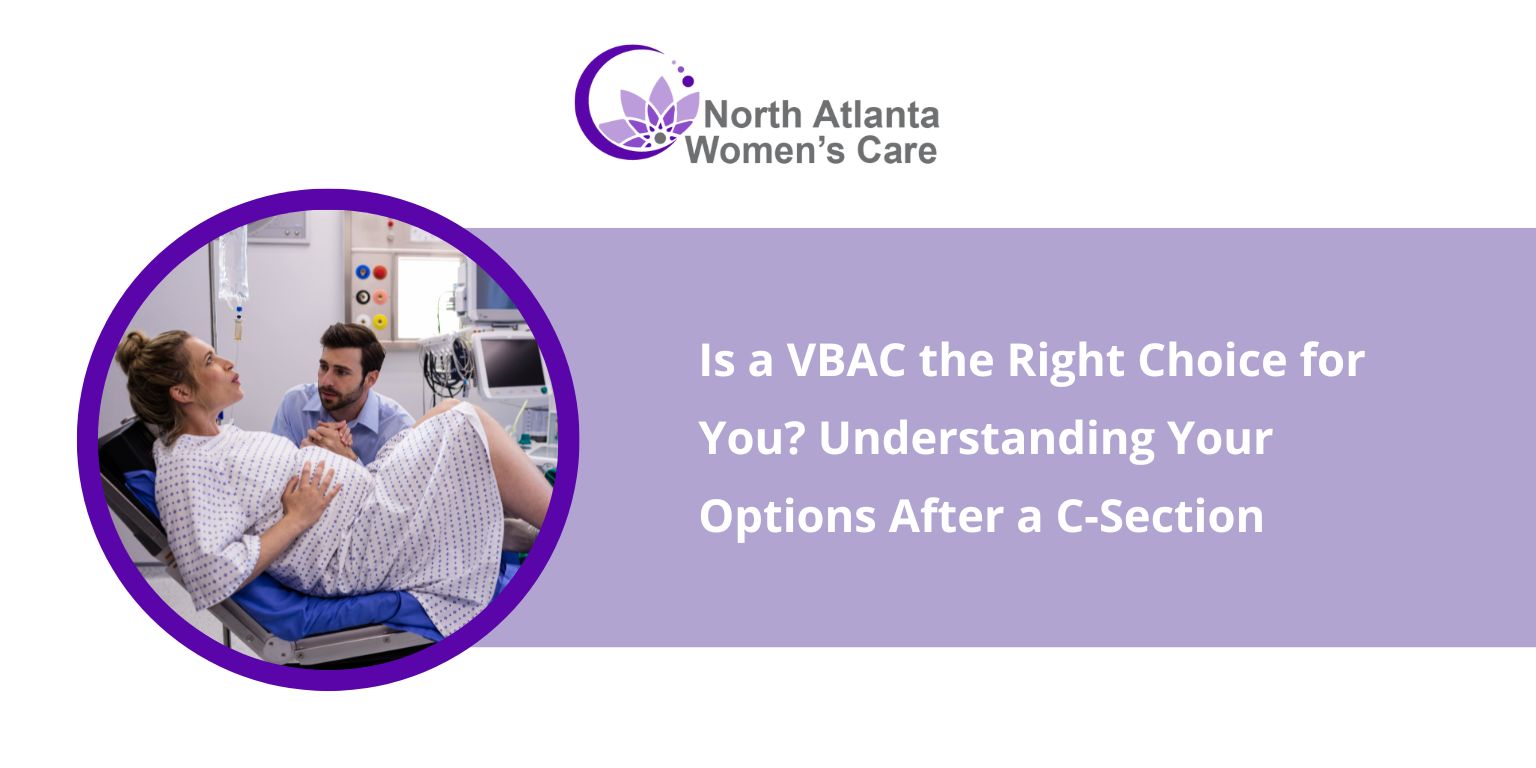Is a VBAC the Right Choice for You? Understanding Your Options After a C-Section

For many women who have previously had a cesarean delivery, the question of whether to attempt a vaginal birth after cesarean (VBAC) or opt for a repeat C-section becomes a significant decision in planning their next birth. VBAC, short for vaginal birth after cesarean, has been growing in popularity as more women explore their birthing options and seek a more natural birth experience.
Choosing how to deliver your next baby is a profoundly personal decision influenced by your medical history, health status, and preferences. Let's examine the key aspects of VBAC to help you understand its benefits and risks and determine whether it could be the right choice for you.
What is VBAC?
VBAC stands for vaginal birth after cesarean. It refers to the process of giving birth vaginally after having one or more previous C-sections. This option provides an alternative to a scheduled repeat cesarean section and allows women the opportunity to experience a vaginal delivery.
The eligibility for a successful VBAC depends on several factors, including:
- The reason for your previous C-section
- The type of incision made during your last surgery (low transverse incisions are usually safer for VBAC)
- The number of prior cesareans
- Your overall health and the health of your baby
- The position and size of the baby
Consulting with your healthcare provider is the first step to determine if you are a good candidate for VBAC birth.
Factors to Consider When Deciding on a VBAC
Choosing between a VBAC and a repeat C-section requires careful consideration of several factors.
Previous C-Section History
The success of a VBAC often depends on why your previous cesarean was performed. If the earlier C-section was due to a non-repeating issue like breech presentation, your chances of a successful VBAC may be higher. The number of prior cesareans also plays a role, as multiple C-sections may increase certain risks.
Health and Pregnancy Complications
Conditions like high blood pressure, gestational diabetes, or having a large baby can influence whether a VBAC is a safe option. Your healthcare provider will assess these factors before making a recommendation.
Hospital and Doctor Support
Not every hospital or doctor supports VBAC deliveries. Choosing a healthcare provider and facility that has experience and policies in place for VBAC births is crucial for both safety and support.
Risks and Benefits
Understanding both the risks and benefits helps you make an informed choice. Benefits may include quicker recovery and fewer complications associated with multiple surgeries. Risks could involve uterine rupture, though this is rare, or the potential need for an unplanned repeat C-section if labor does not progress.
The Benefits of VBAC
- Shorter Recovery Time
Women who successfully have a VBAC often enjoy a faster recovery compared to those who undergo another cesarean. This can mean less postpartum pain and a quicker return to daily activities. - Lower Risk of Complications
VBAC may reduce risks associated with multiple C-sections, such as adhesions (scar tissue), infections, and complications with the placenta in future pregnancies. - Empowerment and Birth Experience
For many women, experiencing a vaginal delivery after a C-section can be incredibly empowering. It may provide a sense of achievement and allow a more active role during labor and delivery.
The Risks of VBAC
- Uterine Rupture
One of the most serious risks associated with VBAC is uterine rupture, where the scar from a previous C-section tears during labor. Although rare, it requires immediate medical attention and may necessitate an emergency cesarean. - C-Section Necessity
Even with the plan for a VBAC, there is still the possibility that a repeat C-section might become necessary if labor stalls or complications arise. - Emotional Considerations
The decision to attempt a VBAC can bring up emotional concerns, including anxiety about labor outcomes or memories of previous birth experiences. Open communication with your healthcare team and support system can help address these feelings.
How to Determine if VBAC is Right for You
- Consult with Your Doctor
Discuss your complete medical and birth history with your healthcare provider. They can help evaluate your risks and recommend the safest option based on your unique situation. - Understanding Your Body's Readiness
The condition of your scar tissue, the health of your uterus, and your general well-being are essential in determining if your body is ready for a VBAC. - Personal Preferences
Consider how vital the birth experience is to you. Your birth plan, emotional readiness, and the presence of a supportive network are all key components in making this decision.
C-Section Recovery Tips
Whether you choose a VBAC or need a repeat cesarean, understanding C-section aftercare tips is essential for healing and well-being.
- Rest and Recovery
Give your body adequate time to heal. Use ice packs to relieve incision site pain and take prescribed medications as recommended. - Gradual Movement
Begin with light walking to promote blood circulation and reduce the risk of blood clots. Avoid strenuous activities until cleared by your doctor. - Healthy Nutrition
Support healing with a balanced diet of protein, vitamins, and hydration. Good nutrition aids tissue repair and boosts energy levels. - Postpartum Care
Monitor the incision site for signs of infection, such as redness, swelling, or unusual discharge. Attend all postpartum checkups to ensure proper healing. - Support and Help
Do not hesitate to ask for help with household tasks and baby care. Allowing yourself time to rest and recover is crucial, especially in the first few weeks after delivery.
When to Consider a Repeat C-Section
In some cases, a repeat C-section may be the safest choice. Situations where this may apply include:
- Complications from a previous cesarean
- Medical conditions that pose risks during vaginal delivery
- A breech presentation or other abnormal baby positions
- Certain uterine conditions
Your healthcare provider will guide you through these considerations to ensure the safest plan for you and your baby.
Also Read: 7 Myths About Vaginal Birth After C-section
Explore Your Options with Confidence at North Atlanta Women's Care
Choosing between a VBAC and a repeat C-section is a deeply personal decision that involves weighing both the medical and emotional factors. By understanding the benefits, risks, and recovery options, you can make an informed choice that aligns with your health and birth preferences.
At North Atlanta Women's Care, our team supports you with expert guidance, personalized care, and trusted medical advice. We are committed to helping you explore your options and create a safe, supportive birth plan that prioritizes both your well-being and your baby's health.
Contact us today at 770-771-5270 to speak with our specialists or schedule your appointment to take the next step toward the birth experience that feels right for you.
Comments are closed

